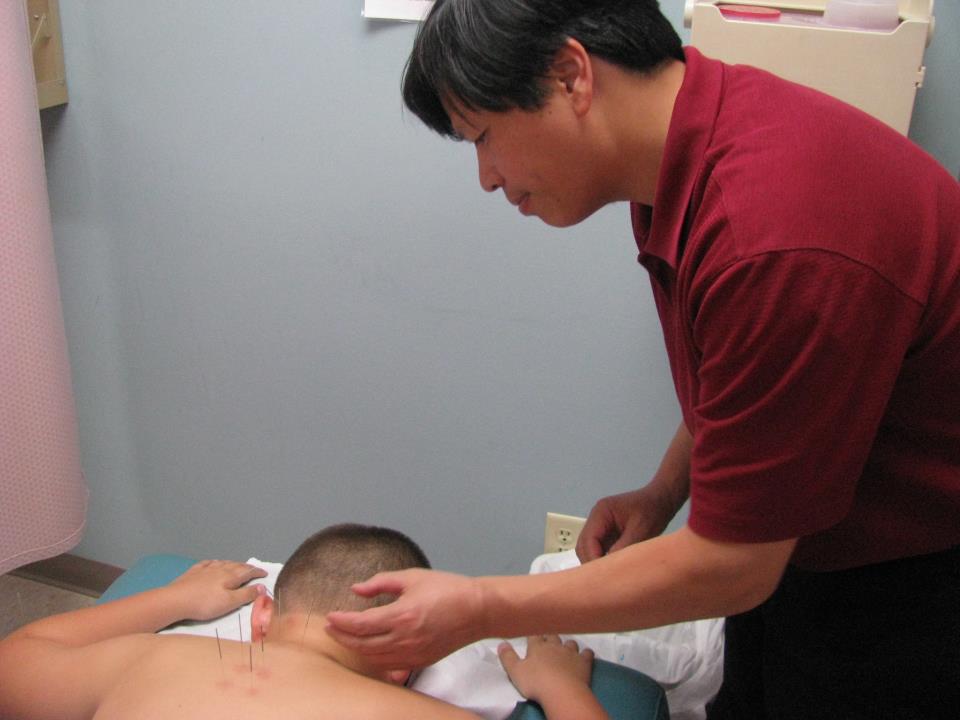Frequently Asked Questions about Acupuncture

What is acupuncture?
Acupuncture is defined as a technique of inserting thin needles through the skin at specific points on the body to control pain and other symptoms. It is a type of complementary and alternative medicine.
When acupoints are stimulated, they promote natural healing and improve the function of your body systems. Not only is acupuncture a natural medicine, it a safe, effective, non-addictive form of treatment for a wide range of medical conditions.
For thousands of years, acupuncture treatment has been an integral part of Traditional Chinese Medicine. It is practiced worldwide for the treatment and prevention of many diseases. Acupuncture points are found on a system of pathways called meridians. These meridians allow Qi (energy) to flow throughout the body. If Qi becomes blocked, and the free flow Qi is disrupted, disease and illness appear. Acupuncture is used to manipulate the flow of Qi to its natural state and balance the forces of yin and yang, thus restoring health.
In the United States, where practitioners incorporate healing traditions from China, Japan, Korea, and other countries, acupuncture is considered part of complementary and alternative medicine (CAM).
More than 40 states and the District of Columbia have laws regulating acupuncture practice. The National Certification Commission for Acupuncture and Oriental Medicine offers national certification examinations for practitioners of acupuncture and traditional Chinese medicine (TCM) (www.nccaom.org ); most, but not all, states require this certification.
(For detailed information: http://nccam.nih.gov/health/acupuncture/introduction.htm#acupuncture)
What is Manual Acupuncture?
Acupuncture is the insertion of thin metal needles into acupuncture points. The needles are hair-thin, solid, sterile and disposed of after each treatment. In manual acupuncture, manual manipulation are used to induce the De-qi, which is often translated to “obtaining the qi” or “arriving at the qi”, a heaviness or numbness, a soreness or achiness similar to a slight cramp. Manual acupuncture is sometime called traditional acupuncture.
What is Electro-Acupuncture?
Electro-acupuncture is an acupuncture technique that apply electrical stimulation via acupuncture needles to acupuncture points to induce De-qi sensation. Some scholars believe electro-acupuncture was first used by physicians in France and Italy as far back as the early 1800s. Others attribute its discovery to Japanese scientists in the 1940s who were interested in making bone fractures heal more quickly. Still others claim that electro-acupuncture wasn’t really developed until 1958, when acupuncturists in China began experimenting with it as a form of pain relief. Whatever the case, electro-acupuncture is an increasingly popular form of treatment, and is used by practitioners of traditional Chinese medicine for a wide array of conditions.
What’s the Difference Between Electro-Acupuncture and Traditional Manual Acupuncture?
Electro-acupuncture is quite similar to traditional acupuncture in that the same points are stimulated during treatment. As with traditional acupuncture, needles are inserted on specific points along the body. The needles are then attached to a device that generates continuous electric pulses using small clips. These devices are used to adjust the frequency and intensity of the impulse being delivered, depending on the condition being treated. Electroacupuncture uses two needles at time so that the impulses can pass from one needle to the other. Several pairs of needles can be stimulated simultaneously, usually for no more than 30 minutes at a time.
One advantage of electro-acupuncture is that a practitioner does not have to induce the De-qi sensation manually. Electric stimulation through needle stimulates a larger area around the acupuncture points that will predictably induce De-qi. Another advantage is that electro-acupuncture can be employed without using needles. A similar technique called transcutaneous electrical nerve stimulation, or TENS, uses electrodes that are taped to the surface of the skin instead of being inserted. The advantage of this procedure is that it can be used by people who have a fear of needles or a condition that prohibits them from being needled.
How safe is acupuncture?
Acupuncture is an all-natural, drug-free treatment with virtually no side effects. In some cases, bruising may occur at the site of needle insertion. The infection risk is low because acupuncture needles are sterile, used once, and immediately discarded.
The U.S. Food and Drug Administration (FDA) regulates acupuncture needles for use by licensed practitioners, requiring that needles be manufactured and labeled according to certain standards. For example, the FDA requires that needles be sterile, nontoxic, and labeled for single use by qualified practitioners only.
Relatively few complications from the use of acupuncture have been reported to the FDA, in light of the millions of people treated each year and the number of acupuncture needles used. Still, complications have resulted from inadequate sterilization of needles and from improper delivery of treatments. Practitioners should use a new set of disposable needles taken from a sealed package for each patient and should swab treatment sites with alcohol or another disinfectant before inserting the needles. When not delivered properly, acupuncture can cause serious adverse effects, including infections and punctured organs.
